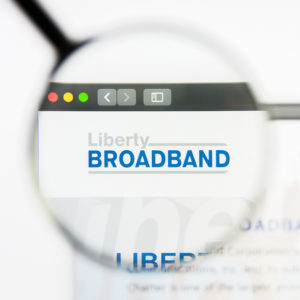A $2 trillion infrastructure plan agreed to in principle by President Trump and Democratic leaders would most likely include money for broadband, but denizens of Capitol Hill should rethink that plan. Not only will new privately funded technology help close the high-speed internet gap but additional taxpayer funding has already been allocated to aid that effort.
Trump met with House Speaker Nancy Pelosi and Senate Minority Leader Chuck Schumer on Tuesday for infrastructure discussions. Not known for his consistent fiscal conservatism, Trump eagerly agreed on a higher number.
“Originally we had started a little lower, even the president was willing to push it up to $2 trillion,” Schumer told reporters outside the White House.
The details are still to be hashed out in Congress — with Republicans expected to challenge the high spending number — but it appears the infrastructure plan would likely include some broadband funding.
White House press secretary Sarah Sanders said that in addition to talking about how to repair the country’s roads and bridges, leaders discussed “expanding broadband access for our great farmers and rural America.”
The last time the government allocated billions of dollars for broadband investment it did not end well. The 2009 American Recovery and Reinvestment Act (aka The Stimulus Bill) provided $7.2 billion in broadband funds, with $4.7 billion for the Rural Utilities Service (RUS).
According to a report by the USDA on April 23, 2012, “We found that RUS had not maintained its focus on rural communities most in need of federal assistance. This is largely because its definition of ‘rural area,’ although within the statutory guidelines, was too broad to distinguish between suburban and rural communities. As a result, RUS issued over $103.4 million in loans to 64 communities near large cities.”
This new announcement comes less than a month after Trump and Federal Communications Commission Chairman Ajit Pai announced a new program to help develop rural broadband called the Rural Digital Opportunity Fund.
The FCC will reallocate $20.4 billion from its Universal Service Fund over the next decade to offer subsidies to providers via reverse auction to build broadband infrastructure in unserved and underserved areas. This is expected to connect 4 million of the 19 million Americans who can’t access download speeds of at least 25 megabits per second, the FCC’s broadband standard.
The FCC already puts about $4 billion annually toward the effort of closing the rural broadband gap.
Last year, Trump issued an informal plan to build “a stronger America” that included $50 billion for rural infrastructure, with broadband listed as a priority.
There’s a good reason many Americans still lack access — by where they choose to live. CNET points out that providers won’t offer service in areas that are remote and don’t have many residents because it’s too costly with not enough payback.
“Building networks in rural America is incredibly expensive, and in some places it’s nearly impossible,” the outlet said. “The terrain can be a problem. Mountainous areas or places where the ground could be frozen for more than half the year make it nearly impossible to install fiber or other infrastructure.”
Emerging 5G wireless technology will help solve that problem. By installing small cells on utility poles and other structures, providers can beam internet signals where fiber is now too costly. The rollout is starting, with more than 90 locations expected to receive some form of 5G service by the end of 2019. That will take place primarily in cities now, but providers are expected to ramp up expansion of 5G quickly.
It’s not the job of taxpayers to subsidize those who lack access because of their locations. Rather than include broadband funding in its infrastructure plan, the Trump administration should continue to look at deregulation and spectrum auctions as means to aid the free-market growth of wireline and wireless broadband without using taxpayer money.

